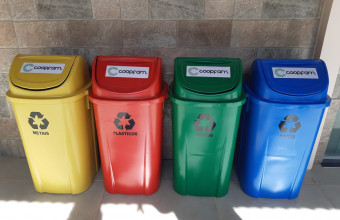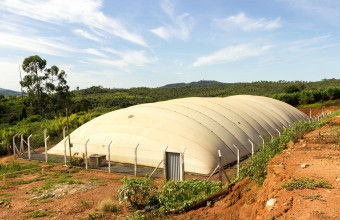In the Amazon rainforest, trees do not survive alone. They need each other to grow, and they are even stronger when they share space with other types of plants and vegetables. This was the lesson that the riverside population taught to the Mixed-Agriculture Cooperative of Tomé-Açu (Camta), founded in 1931, in the state of Pará.
For almost 30 years, the Camta members – most of whom are descendants of Japanese immigrants – have lived off monoculture. They planted black pepper in the forest area and, because of the quality of the product, exported almost half of the production to other countries. Everything was going very well, until, in the 1970s, the cooperative’s entire production was devastated by a plague. It was the beginning of a major crisis.
Looking for solutions, the cooperative members sought help from those who knew the region best: the riverside population, who lives on the banks of the Amazon River. And they were the ones who provided the roadmap to Camta’s salvation: to reproduce, in the cooperative, what nature did in the forest. There, different species cooperate with each other to ensure that all can grow firm, strong, and sustainable.
The production model brings together, on the same land, açai, cocoa, passion fruit, cassava, black pepper, and other foods.
The leaves of plants from one crop serve as fertilizer for the growth of others. By imitating the natural cycle of the forest, this model of agriculture preserves the soil and increases productivity, in addition to ensuring an environmentally friendly, carbon sequestering, and 100% sustainable food production, in production cycles of 25 to 30 years.
IMPROVED PRODUCTION
Camta’s agroforestry production system today covers 40,000 hectares of land, where nature is respected. The cooperative produces around 800 tons of cocoa per year (1/4 of the annual production of the town of Tomé-Açu) and 6,000 tons of fruit pulp per year (half for the external market), as well as other foods such as rice, corn, and black pepper. It is proof that it is possible and necessary to increase production without hurting the environment.
Since the implementation of SAFTA, in the early 2000s, the cooperative has accumulated 10 national and international sustainability awards. A production model that guarantees the livelihood of about 172 families of members in the region, helps reduce deforestation in the Amazon, and also helps improve the quality of life of more than 10,000 people in the Amazon communities benefited by the coop.
In addition, the cooperative holds organic production recognition seals in countries with strict import criteria, as is the case of the JAS seal (Japan organic seal), the USDA Organic seal (United States), the European Union organic seal, and the International Organic seal. Finally, it was also the first enterprise to obtain the Seal of Geographic Indication of the State of Pará.
Want more? Camta was recently selected in an innovation public notice from the Brazilian Agricultural Research Corporation (Embrapa), that will take this production model to other producers in the Amazon, which promises to reduce by more than five times the emission of pollutant gases from agricultural production.
An example of how the exchange of knowledge can help leverage an increasingly green and sustainable low-carbon economy.





